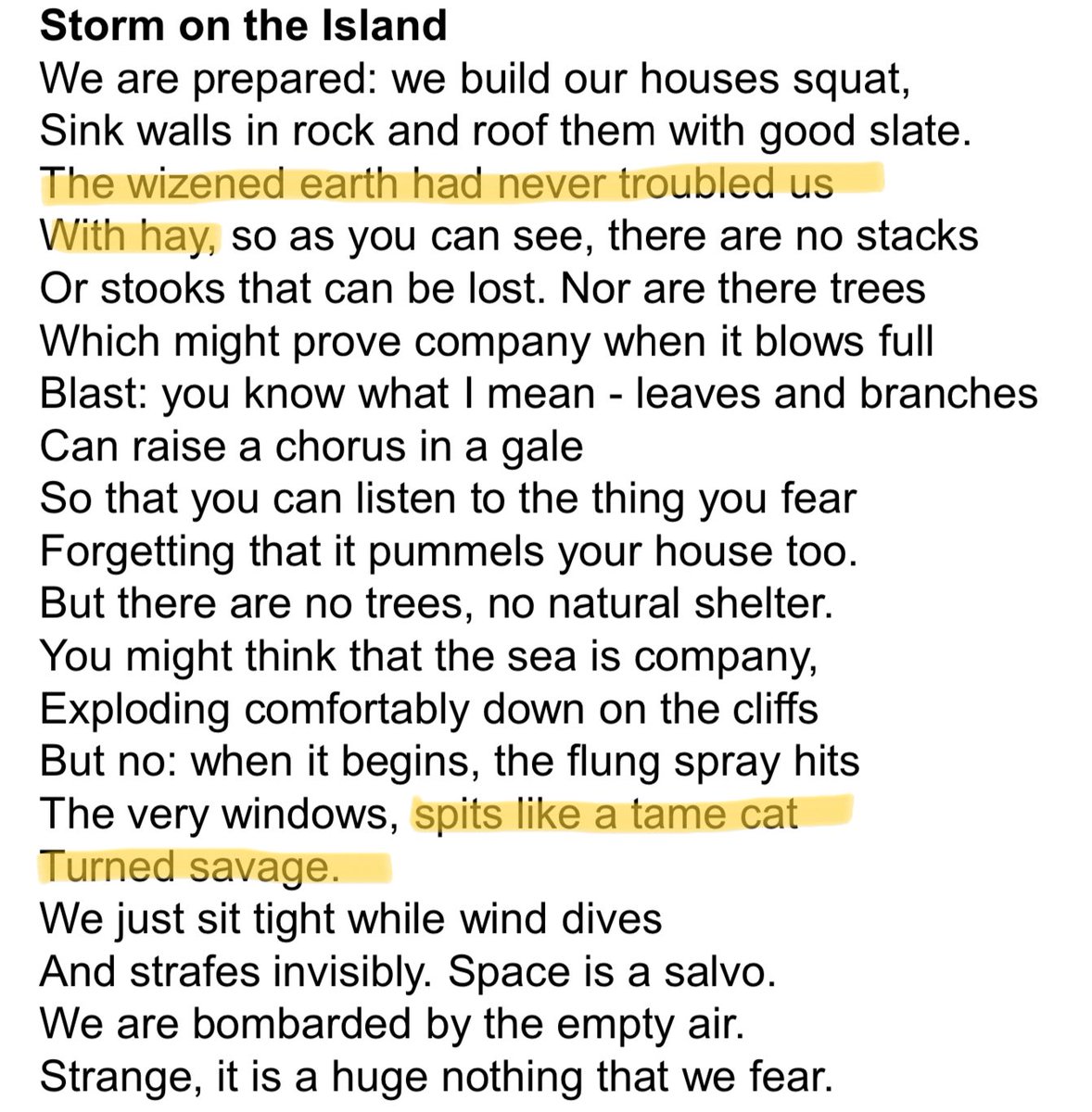I’ve been thinking recently about what we mean by **literary form**. How do we define literary form and how might we think about it?
A short THREAD on what I’ve been thinking with some examples... /1
A short THREAD on what I’ve been thinking with some examples... /1
So, let’s attempt a definition of form first. It would typically refer to one of the following:
1) Rhyme/meter
2) A particular form of poem like a sonnet or ode
3) External shape or typography
4) Relation between parts of the poem and its whole; how they sit together
/2
1) Rhyme/meter
2) A particular form of poem like a sonnet or ode
3) External shape or typography
4) Relation between parts of the poem and its whole; how they sit together
/2
But, I think the most interesting definition I’ve come across is from the superb Robert Hass’ A Little Book on Form
Still for our purposes the above 4 more traditional definitions are perhaps more directly workable, although I have shared Hass with A Level classes to discuss /3
Still for our purposes the above 4 more traditional definitions are perhaps more directly workable, although I have shared Hass with A Level classes to discuss /3
A little more on each of these four and the questions we might ask ourselves and our classes...
/4
/4
*Rhyme/meter*: Knowledge of lots of niche metrical patterns isn’t that useful. I think what’s most important is being able to identify disruptions to common patterns. Poets often break an established meter/rhyme to draw attention to a particular word, image or idea... /5
... Barrett Browning does this very well in Sonnet 29 where she exceeds the typical meter in certain lines perhaps to suggest how her love cannot be contained or controlled. Or Shakespeare might begin a line with a trochee rather than an iamb to draw attention to it /6
*Traditional form*: When a poet utilises a sonnet or ode or elegy they are entering into dialogue with many other poems or poets. This is never an accident. It’s important for students to have some awareness of this sense of dialogue and cultural legacy... /7
... What is being suggested or signified by using the sonnet form? What range of formal expectations does the poet establish by doing this? How might the poet subvert or disrupt this lineage and why? To think about this they need to know the formal chararistics of the sonnet /8
*External shape*: This describes the movement of the poem through space, it’s physical existence. I would include here stanza layout, which I think is the most useful aspect to think about here. What is the stanza structure? How do they fit together? /9
*Relation of parts to the whole*: I think of this as being aspects like juxtaposition and enjambment. The way in which the poem unfolds itself formally and structurally rather than semantically. I find students like to write about this but rarely do it well... /10
... Enjambment is never about the poem flowing but the how meaning/an image extends itself beyond the unit of a line and how this changes its *semantic* properties. A great EG is Storm on the Island. How does the meaning change here and what does it suggest about the storm? /11
I think it’s important to emphasise that form is both a mode of constraint and control, a pattern onto which a poet can map their ideas. BUT it also provides a space in which to deviate, disrupt and break out. Thinking about both is crucial. Both typicality and atypicality
END
END

 Read on Twitter
Read on Twitter




